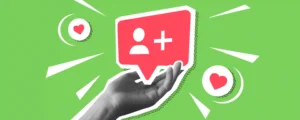YouTube originally introduced the dislike button in 2010, shortly after they abandoned the crude five-star rating system. The concept was really straightforward: they wished to allow viewers to easily indicate that they disliked or enjoyed a video without necessarily commenting on it.
As someone who has helped many creators in looking at their channel analytics, I remember how this update helped it become easier for casual viewers to leave some sort of feedback—especially those who literally just didn’t have the inclination to write a whole paragraph but still wanted to convey how they felt.
From YouTube’s perspective, the dislike button was a means to determine whether a video was worth recommending to others. To content creators, it was somewhat of an instant instinctual check on whether what they were releasing out into the world was connecting with an audience or not. Like all things, it wasn’t perfect, but it allowed everyone to immediately know whether a video resonated or bombed.
Visibility of Dislike Counts Over Time
For years, YouTube showed both like and dislike counts publicly. But in late 2021, they took a fairly controversial step: they removed the public dislike count, even though the button still functioned. Their primary reason was that this would stop organized dislike attacks and perhaps make a more friendly space, particularly for smaller or newer channels.
I’ve seen firsthand how some individuals would target a creator they didn’t like or an opinion they didn’t agree with, and just spam the dislike button to make the content look bad. YouTube said that seeing a high number of dislikes could encourage more negativity, so they just hid it. Of course, not everyone loved that decision. You can learn more about Top TierSMM from here.
This annoyed some who believed it hid useful information, especially if they were trying to find good tutorials or reliable product reviews.
Effects on User Experience
Although you don’t get to see the dislike counts anymore, YouTube still employs them behind the scenes to recommend or not recommend content. But as a viewer, it’s even more difficult to tell right away if a video is legitimate. I know that when I’m searching for a quick how-to video, it would rule out videos that had an awful like-to-dislike ratio. Now, I don’t receive that immediate hint.
It’s something that some think makes it less negative or pile-ons, although others have argued that it’s compromised transparency on the site. That it also has the perception of YouTube “protecting” creators from criticism, regardless of whether they are or are not.
Impact on Creators
If you’re a maker, criticism comes with the territory, no matter how painful.
I’ve watched many creators panic over spikes in dislike, and it can be stressful on the brain. Yet some of them also learned to use that data to troubleshoot or learn more about their audience. Now that the count is hidden, you can only view it in your personal analytics. Some creators cite this as a relief since it prevents them from obsessing over like-dislike ratios.
Some people dislike it because it was a convenient method of measuring how individuals felt without going in too deeply with other statistics.
Harassment and Trolling Issues
Unfortunately, the dislike button has not always been used for good. I recall a friend of mine having posted a video on a highly controversial issue and waking up to thousands of dislikes, the majority of which were from individuals who never even got a chance to see the whole video. It was essentially a coordinated attack.
Therefore, some content makers turn ratings off entirely or simply moderate their comment sections heavily to maintain civility. Others began utilizing polls or feedback forms to solicit more pointed viewer input. It is imperfect, but it allows them to filter out the trolls who merely want to hate on something.
Alternatives and Possible Improvements
A simple like/dislike may not be revealing enough. Sometimes, people dislike a video merely because they don’t agree with the opinion, but not because the video was badly produced. More specific feedback systems—such as flagging a video as misleading or outdated—would inform creators of what’s really going wrong.
Comments are wonderful when they’re useful, but commenting takes more effort than a button click, and let’s be real, comment sections can become toxic wastelands if they’re not properly moderated. Better guidelines and more tools to deal with hateful comments would be wonderful, yet it does take effort to keep everything in check.
YouTube’s Official Position and Reaction
YouTube has stayed with the story of hiding the public dislike count in the sense that it helps reduce harassment and makes the community a healthier place for creators. They know that not everyone is a fan of this change, but they seem willing to experiment with new forms of feedback. Nothing concrete has been announced yet, though.
Community Opinions and Debates
This entire debacle of the dislike button isn’t going away anytime soon. Some people propose allowing creators to display or not display dislikes. Others believe that showing the number of dislikes is important for transparency, particularly if you’re reading reviews of products or how-to instructional videos.
From what I’ve heard from other creators, a lot of them enjoy not having an ear-shatteringly terrible metric in case something goes south. However, a lot of them also miss the accountability factor, as a high number of dislikes could potentially be a means of warning viewers that “Hey, perhaps this content is misinformation or simply not good.”
Comparison with Other Platforms
Various sites handle negative feedback differently. Instagram and Facebook, for example, only allow you to ‘like’ something, no dislike whatsoever. Reddit allows upvoting or downvoting, but you also get to see the discussion in context. TikTok, surprisingly, added a dislike for comments, but not for videos, which is somewhat of a different moderation approach.
YouTube could take a few pointers from these locations, or they could dig their heels in. Perhaps we’ll have a hybrid situation where they attempt to find some middle ground between creator well-being and viewer transparency.
FAQs
Can I still dislike videos on YouTube?
Yes, the button’s still there, and your dislike is noted on the back end. Other users just don’t see the total number of dislikes.
Do dislikes impact video recommendations?
They probably do. YouTube never divulges fully how the algorithm operates, but user feedback (which includes dislikes) is also part of video recommendations.
Can creators identify who disliked their video?
No, artists only see the total number of dislikes in their analytics. They are not aware of which accounts disliked the video.
Read more related blogs and guide on InstaCreator. Also Join us WhatsApp.


